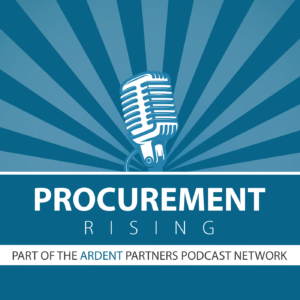Ardent recently completed its sixteenth annual CPO-themed market research study, “The State of Procurement & the CPO”, which is part of an ongoing dialogue that my team and I have had with Chief Procurement Officers (CPOs) and other procurement leaders for more than a decade. Over the next few weeks, we’ll be discussing the results from this year’s study in a series of articles on this site. If you’d like access to this report, make sure to register for our newsletter with a business email address.
The proper blend of talented people, efficient processes, and enabling technology is needed for procurement to deliver full enterprise value. Achieving the desired mix can be an iterative process and is, most often, an incremental one. Finding and retaining the right talent will remain a top challenge for CPOs throughout 2021 (see Figure 4, page 6) in part because a procurement department’s talent needs can evolve as the operation (and business) matures, expands, and/or changes. Technology needs also change, as do the underlying capabilities available in the supply management solutions market. This means that CPOs must regularly evaluate on-hand resources to determine (1) if they are equipped to support their annual and multi-year strategic plans and (2) if they are the best talent that the department can afford.
One of the things that makes procurement such a fascinating profession is that when a procurement team is fully engaged, it touches nearly everything within the enterprise. It also regularly connects with suppliers and prospective suppliers. Procurement responsibilities can range from the highly strategic and complex to the highly tactical and straightforward. With almost unlimited access to the enterprise, there are many unique opportunities to create value. To capitalize upon them, teams need to draw upon a wide range of creative and technical skills and experience. Some roles and projects within procurement require broad skills while others benefit from specialization and/or repetition.
Consider the broad problem-solving skills a sourcing lead needs to use when working with a product team. The collaboration might start with early-stage prototyping and continue through the launch of a highly-technical product that requires tight supplier collaboration. Those are very different than those needed on a project that partners with HR in the development of a 360-degree contingent workforce management program. That project collaboration might involve reshaping how temporary workers, including independent contractors, freelancers, and professional services teams are engaged, sourced, and ultimately managed. These two example projects require very different skillsets and capabilities as do core activities like PO processing, running low-value, single-price auctions, or tracking contract compliance.
If you are interested in learning more about the key procurement and CPO data collected in our annual research study, consider listening to Ardent’s brand new “Procurement Rising” podcast series. Click below to listen to new episodes. The podcast is also available on Apple, Spotify, Stitcher, Google, or wherever you get your podcasts.


